Cooking steak the right way isn’t just about the cut or the seasoning – the oil you use can have a big impact on how your steak turns out. The ideal oil should have a high smoke point to handle high heat without burning, and it shouldn’t overpower the flavor of the meat.
Oils with high smoke points like avocado oil, refined olive oil, and grapeseed oil are common choices. These oils can withstand the high temperatures needed for a proper sear, helping to develop that flavorful crust without releasing smoke or off-flavors. On the other hand, oils with lower smoke points, like unrefined olive oil or butter, are more likely to burn and leave a bitter taste.
Choosing the right oil is about balancing heat resistance with how it interacts with the meat’s natural flavor. Some oils let the steak shine without interference, while others can add a subtle character of their own. Knowing how each oil behaves in high-heat settings helps you make better choices in the kitchen – whether you’re pan-searing, grilling, or finishing in the oven.
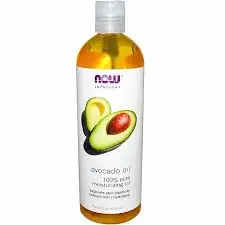
1. Avocado Oil
Avocado oil is extracted from the pulp of the avocado fruit, not the seed. Unlike many seed-based oils, this oil is derived from the soft flesh surrounding the pit, giving it a thicker texture and a richer nutrient profile. It’s commonly available in both refined and unrefined forms. The unrefined (cold-pressed) version retains more of its natural green tint and subtle avocado flavor, while refined avocado oil is lighter in taste and more stable at high temperatures.
One of its key traits is a very high smoke point, especially in its refined form. This makes avocado oil a strong option for searing steak, where consistent high heat is needed to create a good crust without burning. It’s stable, heats evenly, and doesn’t overpower the flavor of the meat, which is essential for simple steak prep. The mild taste also works if you’re finishing meat in the oven or flash-grilling over open flame.
Nutritionally, avocado oil contains monounsaturated fats and a small amount of potassium, though its health benefits aren’t a focus when choosing an oil for steak. Its versatility in both raw and cooked dishes makes it a common kitchen staple. That said, it can be more expensive than other oils and may not be the first choice if you’re focused solely on neutral taste or budget.
Best Uses:
- Searing steak in a cast iron skillet
- Grilling over direct high heat
- Oven-finishing after pan-searing
- Lightly brushing steak before reverse sear
Avoid If:
- You want an oil with zero taste
- Cost is a key factor (can be expensive)
- You’re only cooking at low heat or using raw oil as a garnish

2. Safflower Oil
Safflower oil is made from the seeds of the safflower plant, a thistle-like crop that’s often grown in arid climates. It comes in two main varieties: high-linoleic and high-oleic. For cooking, high-oleic safflower oil is the preferred type due to its stability and high resistance to heat. It’s pale in color, has a neutral flavor, and doesn’t interfere with the taste of the food it’s used with.
The safflower oil’s high smoke point is suitable for serious high-heat cooking like steak searing. This high tolerance allows you to use intense direct heat to develop a crust on the outside of the steak while keeping the inside rare or medium-rare. It spreads well in the pan, doesn’t overpower the meat, and won’t break down under pressure.
This oil is mainly functional – it doesn’t add flavor and isn’t known for unique culinary characteristics. It’s a good fit if you’re focused on technique rather than taste contributions from the oil itself. However, it may not be ideal for low-temperature cooking or recipes that benefit from added richness.
Best Uses:
- High-heat steak searing
- Cast iron pan cooking
- Grilling steaks
- Flash searing or reverse sear methods
Avoid If:
- You want flavor contribution from the oil
- You’re using low or medium heat
- Seeking unprocessed or minimally refined oils
- Cooking on a tight budget (cost can vary by region)

3. Canola Oil
Canola oil comes from the seeds of the canola plant, a modified form of rapeseed bred for safe consumption. Expeller-pressed canola oil is extracted mechanically without chemical solvents, making it a cleaner option compared to fully refined versions. It retains a light color and neutral taste, which makes it suitable for a wide range of cooking applications, including high-heat methods.
Expeller-pressed canola oil has a high smoke point, allowing it to handle the heat needed for pan-searing or grilling steak. It doesn’t overpower the flavor of the meat, making it a solid choice when you want to highlight the seasoning or natural taste of the steak. It also performs well in cast iron or stainless steel pans and can be used for oven-finishing after searing.
Although it’s heat-stable and neutral, this oil doesn’t contribute any added flavor and may not be ideal for cooks looking for a more unprocessed or flavor-forward option. While it’s not chemically refined, it’s still processed to some extent, which might not appeal to those avoiding all refined oils.
Best Uses:
- Pan-searing steak over high heat
- Grilling with consistent temperature control
- Oven-finishing after browning
- Recipes needing a neutral-flavored oil
Avoid If:
- Looking for oil that adds flavor to the steak
- Avoiding all forms of processed or refined oils
- Cooking methods that stay below high heat
- Preferring oils with a richer or more complex profile
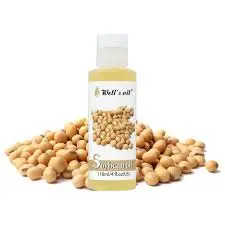
4. Soybean Oil
Soybean oil is a widely used cooking oil extracted from processed soybean seeds. It has a neutral flavor, light texture, and is commonly chosen for its versatility in high-heat cooking. Because it’s highly refined, it holds up well in various methods like frying, roasting, and sautéing, without breaking down or overpowering the food.
Its smoke point reaches a high point, making it a reliable option for searing steak. The oil resists oxidation at high temperatures and performs well in pans or on grills, allowing the steak to develop a crust while keeping the interior at the desired doneness. It doesn’t affect the flavor of the meat or any dry rubs, marinades, or seasonings used.
Soybean oil is rich in omega-6 fatty acids but contains negligible amounts of omega-3 fatty acids, and it is not a source of DHA or EPA. It’s best used when neutrality and heat resistance are priorities, but may not appeal to those avoiding refined oils or aiming for added richness from the cooking fat.
Best Uses:
- High-heat pan-searing
- Grilling with minimal flare-ups
- Oven-finishing steak after browning
- Neutral oil base for seasoning-heavy dishes
Avoid If:
- You want flavor-enhancing oils
- Avoiding highly refined cooking fats
- Looking for cold-pressed or less processed options
- Cooking methods that benefit from more character in the oil

5. Sunflower Oil
Sunflower oil is a widely used cooking fat known for its neutral taste and light texture. It’s often chosen for tasks that require high temperatures, especially in fast-paced kitchens or recipes where the oil shouldn’t influence the flavor of the food. The semirefined type, commonly available in stores, offers a practical balance between heat stability and general-purpose use.
Its high smoke point makes it suitable for searing steak without the risk of burning or breaking down. It distributes heat evenly across the pan and doesn’t interfere with the flavor of the meat or any seasoning applied. When used in cast iron or on a grill, it supports a crisp outer crust without leaving residue or altering taste.
Despite its utility, sunflower oil doesn’t add richness or depth. It’s best viewed as a neutral carrier that supports the cooking process rather than enhancing it. For those looking to reduce omega-6 intake or use unrefined oils, there may be better alternatives.
Best Uses:
- Pan-searing steaks quickly and evenly
- Grilling meat with dry spices or marinades
- Clean oven-finishing without flavor transfer
- High-volume cooking where neutrality matters
Avoid If:
- You want added taste or aroma from the oil
- Prioritizing unprocessed or cold-pressed oils
- Managing omega-6 intake closely
- Preparing recipes at lower temperatures where oil stability isn’t critical
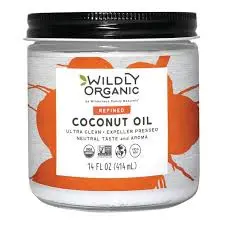
6. Coconut Oil (Expeller-Pressed)
Expeller-pressed coconut oil is produced by mechanically pressing dried coconut meat, resulting in a more refined product that’s solid at room temperature. Unlike virgin coconut oil, it lacks a strong coconut aroma or flavor, making it more neutral in taste. It may undergo additional processing, so it’s important to verify whether any solvents, bleach, or hydrogenation were involved in its production.
An expeller-pressed coconut oil can handle moderate-heat cooking methods. While it’s not ideal for extremely high temperatures, it can be used for pan-cooking steaks at controlled heat levels. It also coats pans well, making it useful for preventing sticking when seasoning cookware or preparing smaller cuts in a skillet.
Despite its versatility in the kitchen, this type of coconut oil isn’t the best fit for high-heat searing. It’s more suitable for light browning or medium-heat sautéing. Additionally, its solid state at cooler temperatures can make it less convenient to work with compared to liquid oils.
Best Uses:
- Light pan-browning at medium heat
- Pre-seasoning cast iron skillets
- Cooking thin or quick-cooking steak cuts
- Recipes requiring neutral coconut oil without aroma
Avoid If:
- High-temperature searing is required
- Wanting to avoid refined or potentially hydrogenated oils
- Looking for an oil that stays liquid at room temperature
- Cooking large or thick steak cuts that need intense heat
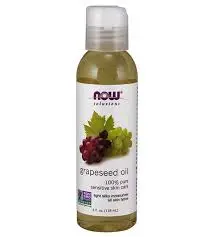
7. Grapeseed Oil
Grapeseed oil is extracted from the seeds left over from winemaking, making it a by-product of grape processing. It has a light, clean flavor and a thin consistency, which makes it popular in both cooking and food preparation. Although often used in dressings and infused oils, it also performs well under heat due to its smoke point and neutral profile.
Grapeseed oil can be used for pan-cooking steak, especially when moderate to high heat is needed without burning. Its mild taste means it won’t compete with herbs, rubs, or sauces used on the meat. It coats pans evenly and works well in stainless steel or cast iron without leaving a heavy residue.
While suitable for high-heat cooking, grapeseed oil contains a high percentage of polyunsaturated fats, which are more prone to oxidation when exposed to long periods of intense heat. It doesn’t enhance flavor and may not be the first choice if you’re avoiding refined oils or aiming for richness from the fat itself.
Best Uses:
- Moderate to high-heat steak searing
- Grilling with dry rubs or marinades
- Oven-finishing in a thin oil layer
- Neutral oil base for herb- or spice-heavy dishes
Avoid If:
- You prefer oils with more flavor or aroma
- Concerned about oxidation of polyunsaturated fats
- Avoiding refined vegetable oils
- Cooking methods that exceed high-heat stability limits
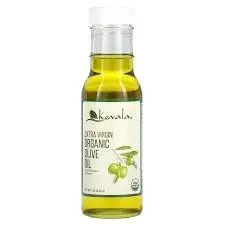
8. Olive Oil
Olive oil is a widely used cooking fat, available in several grades, each with distinct properties that affect its performance under heat. While it’s often praised for flavor and versatility, not all forms of olive oil are ideal for high-temperature cooking. The most suitable types for searing or grilling are refined and virgin olive oils, which are more heat-stable than extra virgin varieties.
The smoke point of olive oil can vary depending on its level of processing. Refined olive oil is the most stable and can handle high temperatures without breaking down, making it suitable for pan-searing steak at moderate to high heat, provided the temperature is carefully monitored to avoid exceeding its smoke point. Extra virgin olive oil, especially unfiltered or high-acidity types, is more prone to burning and is better reserved for post-cooking use or lower-heat applications like sautéing.
In steak preparation, olive oil is best used when moderate heat is involved or when added at the end for flavor. While it doesn’t match the heat resistance of oils like avocado or grapeseed, it can still be part of the process if chosen carefully and used with attention to temperature.
Best Uses:
- Medium to high-heat pan-searing (with refined olive oil)
- Grilling with careful temperature control
- Sautéing or oven-finishing
- Drizzling over steak after cooking (extra virgin)
Avoid If:
- Searing at high heat with extra virgin olive oil
- Looking for an oil that stays fully neutral
- Cooking methods involve long exposure to high temperatures
- Avoiding refined oils entirely
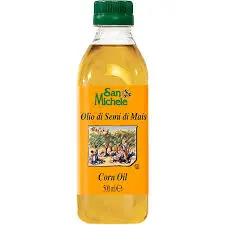
9. Corn Oil
Corn oil is a refined vegetable oil commonly used in frying and commercial food preparation. It has a neutral flavor, light consistency, and performs well under high temperatures. Due to its high smoke point and wide availability, it’s often chosen for cooking methods where stability matters more than flavor enhancement.
Corn oil is suitable for searing steak at high heat. It allows for a strong crust to develop without breaking down or producing smoke too early. Its neutral profile makes it compatible with bold rubs, marinades, or sauces, as it won’t interfere with the seasoning or natural taste of the meat.
Corn oil is mainly used for function, not flavor. It doesn’t contribute richness and may not appeal to those avoiding refined or highly processed oils. However, for high-heat applications where reliability is key, it serves its purpose well.
Best Uses:
- High-heat pan-searing
- Grilling steaks over open flame
- Finishing in oven after browning
- Neutral base for spice-heavy preparations
Avoid If:
- Wanting an oil that adds flavor
- Avoiding refined or industrially processed oils
- Preferring cold-pressed or unfiltered options
- Cooking below high-heat range where lighter oils are better suited

10. Peanut Oil
Peanut oil is extracted from shelled peanuts using either mechanical pressing or solvent extraction, depending on scale and intended use. The oil content of peanuts can vary from 40% to 50%, influenced by factors like cultivar, climate, and growing practices. Refined peanut oil, typically used for cooking, is neutral in taste and odorless, making it compatible with a wide range of ingredients.
With a smoke point of up to 450°F, refined peanut oil is well-suited for searing steak, grilling, or any high-heat method. It forms a solid crust on meat without burning, absorbs minimally, and holds steady even during extended cooking. Its heat stability comes in part from its relatively higher saturated fat content compared to other vegetable oils, which also helps reduce the formation of unwanted oxidation products during cooking.
Although peanut oil is highly functional, it’s not appropriate for every kitchen. It does not add richness or character to dishes and should be avoided by those with peanut allergies. In addition, some may prefer to steer clear of oils that are commonly solvent-extracted or refined, especially in large-scale production. Still, for high-temperature steak preparation, it remains a dependable and widely used option.
Smoke Point: Up to 450°F (232°C)
Best Uses:
- Searing steak over high heat
- Grilling with consistent temperature
- Cooking methods that require long heat exposure
- Recipes needing a neutral oil base
Avoid If:
- Allergic to peanuts
- Looking for flavor-enhancing oils
- Avoiding solvent-extracted or refined oils
- Cooking at low temperatures where neutral oils aren’t necessary
Avoid These Oils When Searing Steak
Searing steak requires high, direct heat – often well above 400°F – to develop a proper crust. Not all oils are suited to this. Some break down too quickly, while others bring strong flavors that can interfere with the taste of the meat. Using the wrong oil can result in smoke, bitterness, and an uneven cook.
Below are common oils that are not recommended when searing steak:
- Butter: While butter adds flavor, it burns easily due to its low smoke point of around 350°F. When exposed to the high temperatures needed for searing, it quickly turns brown or black, leaving a bitter residue on the meat. It’s better used after cooking to finish a steak with richness, not as the primary searing fat.
- Extra Virgin Olive Oil: Although popular for everyday cooking, its smoke point can range from 325°F to 375°F depending on quality. When used for searing, it tends to smoke early and may produce off-flavors. It also has a strong, sometimes grassy taste that can overpower the natural flavor of the steak.
- Unrefined Sesame Oil: Known for its distinct, nutty aroma, this oil burns quickly and isn’t built for high-heat applications. It’s best used in dressings or low-temperature cooking. Applying it to steak under intense heat risks not only smoke but also an off-putting flavor mismatch.
- Flaxseed Oil: Extremely sensitive to heat, flaxseed oil is better suited for cold dishes or supplements. It breaks down rapidly at high temperatures, offering no benefit in a searing context. Using it in a hot pan will result in smoke and an unpleasant taste.
Choosing the right oil is critical when searing steak. Look for options that can handle the heat – and stay out of the way when it comes to flavor.
Conclusion
Choosing the right oil for cooking steak isn’t just about preference – it directly affects how well the meat sears, how it tastes, and how cleanly it cooks. Oils with high smoke points and neutral or mild flavors are best suited for high-heat methods like pan-searing or grilling. Options like avocado, peanut, and refined sunflower oil deliver reliable results without burning or interfering with flavor.
On the other hand, oils with low smoke points or strong aromas can compromise the outcome, leading to bitterness, smoke, or clashing tastes. Knowing which oils to avoid is just as important as knowing which ones to use. In the end, the best oil is one that lets the steak take the spotlight – not one that smokes up the kitchen or alters what should be a simple, well-cooked piece of meat.
FAQ: Cooking Steak with Oil
1. Can I cook steak without any oil at all?
Yes, but it depends on the method and the pan. In well-seasoned cast iron or nonstick pans, fatty cuts like ribeye can render enough fat to cook themselves. However, using a small amount of oil helps with even browning and reduces sticking, especially for leaner cuts.
2. Is it safe to reuse oil after searing steak?
It’s not recommended. Oil exposed to high heat and meat juices breaks down quickly and may develop off-flavors or harmful compounds. For the best results, use fresh oil each time you cook steak.
3. Does the type of pan affect which oil I should use?
Yes. In stainless steel or carbon steel pans, oil is essential to prevent sticking and support browning. Cast iron retains heat well and benefits from oils with higher smoke points. Nonstick pans generally require less oil and shouldn’t be used over high heat, which limits your searing options.
4. Can I mix oils when cooking steak?
Technically yes, but it’s not usually helpful. Mixing oils doesn’t necessarily raise the smoke point and can create uneven behavior under heat. It’s better to stick with a single oil suited to the cooking method you’re using.
5. Does refrigerating or freezing steak affect which oil I should use?
Not directly, but colder steak requires slightly more care during searing. Make sure the steak comes to room temperature before cooking, so the oil doesn’t cool down too quickly and interfere with browning. The oil choice itself remains the same -heat stability matters more than the meat’s starting temperature.

Leave a Reply